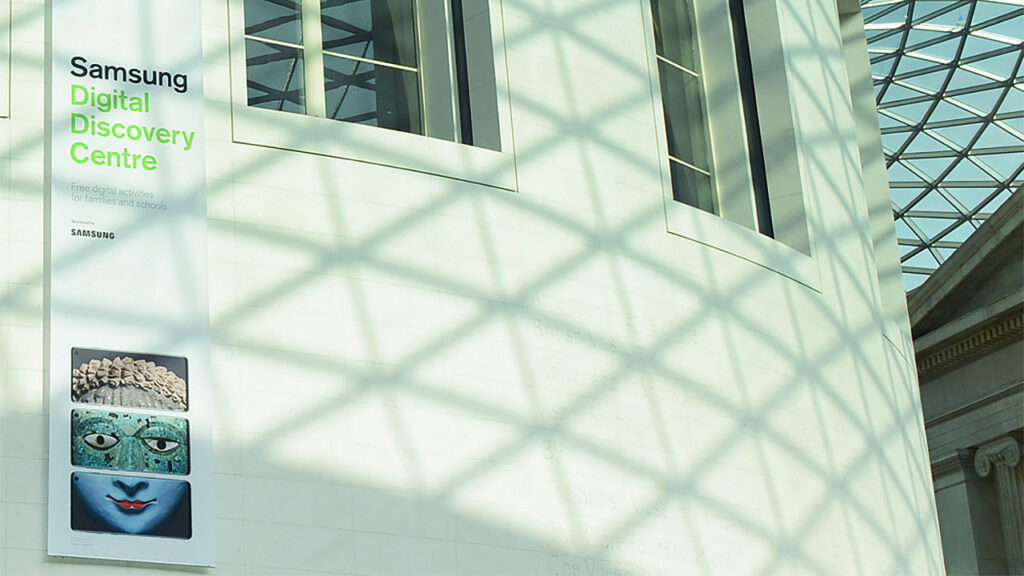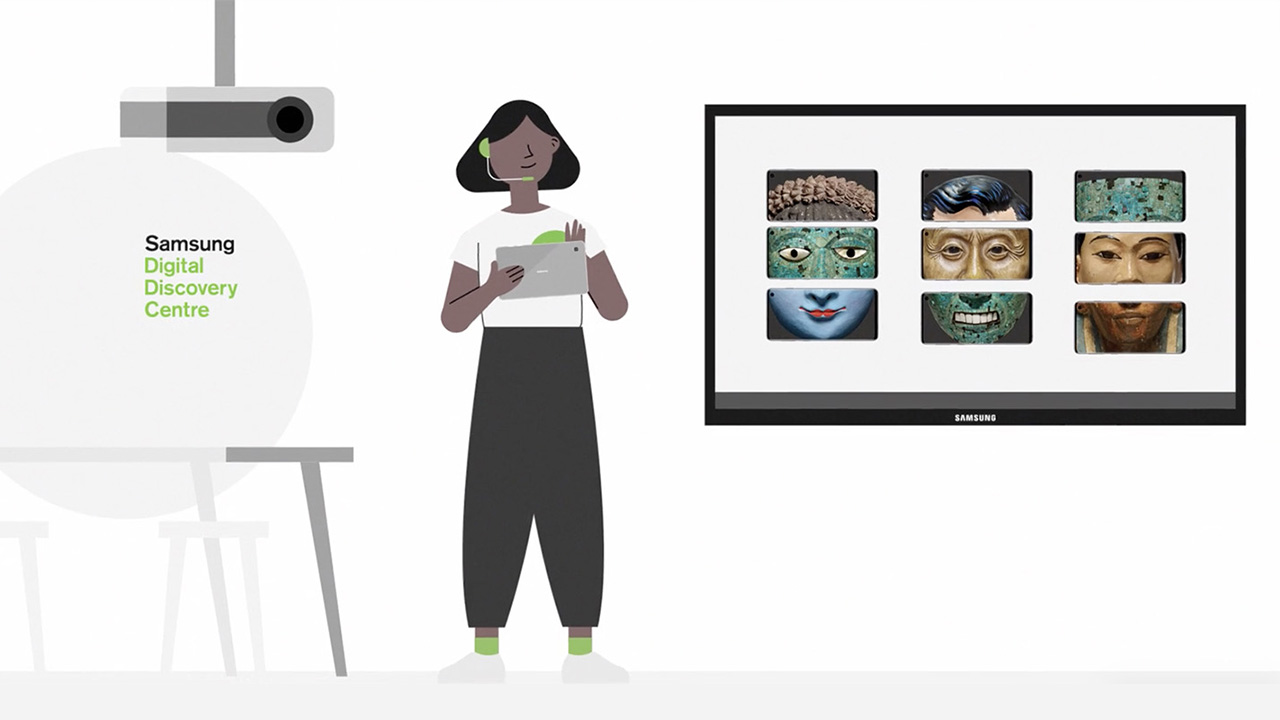At a time when the pandemic’s financial squeeze is forcing most museums to reduce and furlough staff, the British Museum’s digital education program is recruiting. And not without good cause. After years of selling out video conferencing workshops that bring curricula to life by beaming Greek temples and wonders of the Indus Valley into classrooms around the UK, Virtual Visits expanded significantly as lockdowns swept the country. All 700 digital workshops scheduled for the current academic calendar have been booked, with the team adding a further 200 sessions to meet demand.
Developed and delivered by the British Museum’s Samsung Digital Discovery Centre (SDDC), the success of Virtual Visits is a case study in how forward-thinking and smart sponsorship can produce excellent outcomes. The museum has partnered with the Korean technology giant since 2008 in rolling five-year agreements that provide technology and funding, all essential elements in creating stable, relevant, and iterative digital education programs.
In short, as museum education departments around the world scrambled to pivot and reinvent offerings in Spring 2020, the SDDC simply expanded an existing arm of its digital programming, an experience that Ed Lawless, SDDC’s Digital Learning Manager, breaks down with Jing Culture & Commerce.
The program has been a trailblazer in using video conferencing for education. What’s the backstory?
Virtual Visits was first developed and launched in 2011 as an additional way of engaging young people with the museum’s collections and the UK’s national curriculums. It uses digital technology as a tool for exploring and interpreting a diverse world of object-focused narratives. It’s a unique opportunity to bring our experts into classrooms across the UK. We’ve witnessed an evolution: before it might have been considered niche, now, there’s an understanding that young people use digital in formal learning and cultural institutions should meet them there.
Given this experience, how prepared were you to go fully virtual?
We knew its day would come eventually, given the data on increased interest over several years from more and more schools, we just didn’t expect it to accelerate so quickly. Our team was prepared in terms of creating and delivering digital learning content, but we were highly reliant on the support of other colleagues to help scale things up.
How did your team work with other departments?
We work with everyone from the Box Office team on developing the Museum’s first online booking system for schools, to the Press and Marketing team to raise the awareness of the program to teachers well beyond those who would usually make a physical visit to the museum with their students.

In the 2020-21 academic calendar, 7,000 students participated in 230 virtual visits, way up from pre-2020 numbers of a hundred students across a dozen sessions. Image: Samsung
Aside from a robust technical setup, what makes for strong digital programming?
Ultimately, what makes these experiences so engaging is the staff who deliver them live from the museum, and the fact that they were already familiar with video conferencing technology has been a great advantage. They inject their enthusiasm and passion to the workshops as if the students were in the museum with them and this is vital to keeping students engaged throughout.
The pandemic has spotlighted unequal access to technology and internet among schoolchildren. How is the Virtual Visits thinking about this?
Prior to March 2020, the main limiting factor preventing teachers from accessing Virtual Visits was confidence and internal IT support in their schools. The past year has compelled teachers and schools to adapt and become more familiar with remote learning. But, if the Virtual Visits program is not something schools can connect to, there are many other provisions. This includes videos on a teacher’s YouTube playlist, downloadable image banks, and presentations available on the museum’s website and project ideas shared through an e-newsletter. Having a range of entry points into the museum’s collections is integral to making it as accessible to as many students as possible.
At present, Virtual Visits’ programming focuses on younger students. Do you plan to extend offerings?
Our programming this year has had an exclusive focus on students aged 7 to 11. This reflects the strong links with the history curriculums of the UK and our well-established relationships with teachers supporting students of that age. However, we know that this channel has substantial opportunities for expansion and that there’s demand from teachers of older students for live learning experiences. While some of our core principles will still apply, there are changes in technological and learning expectations for this group. Thankfully, we have some superb existing program for older age groups at the museum covering topics from Classics and Art to Relationship and Sexual Health Education. We can use the experiences of developing those program to create some brilliant digital learning experiences that can be packaged into live video call workshops.
What’s next? How are you preparing for the museum’s reopening?
We have our eyes on the reopening of the museum and what we can do to support the return of families and then schools back into the museum. We are making a concerted effort to not simply restart the same programs that we paused in Spring 2020. We are taking this opportunity to rethink each resource and piece of programming before launching it. We’re also thinking about what opportunities have presented themselves: are there things we can do now, which were not possible before? We are extremely excited for what the future holds for digital learning at the British Museum.



